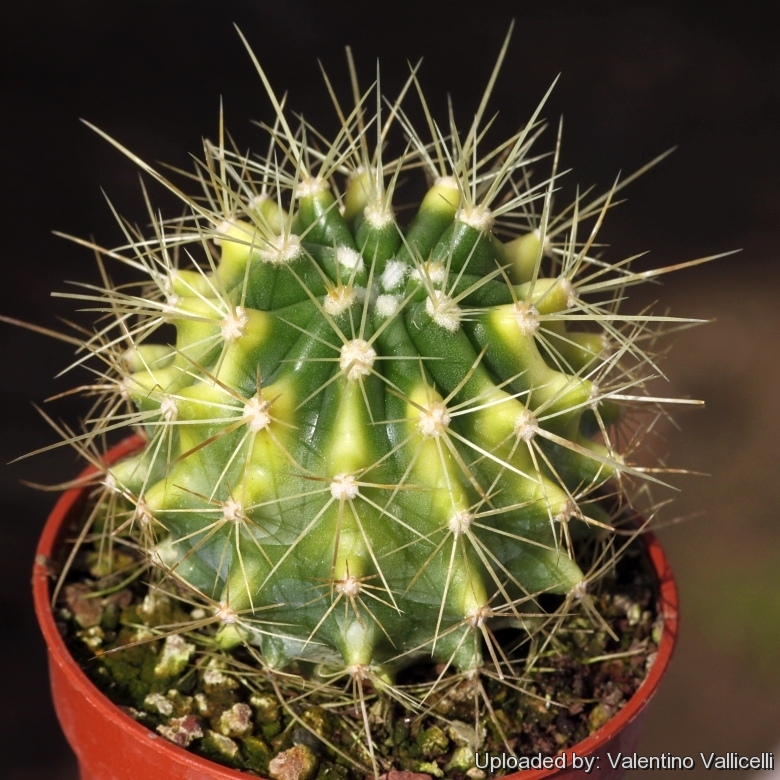
Ferocactus hybrid alamosanus x schwarzii f. variegatus Photo by: Valentino Vallicelli
Origin and Habitat: Garden origin (Nursery produced hybrid)
Synonyms:
See all synonyms of Ferocactus hybrid
Description: Seedlings of hybrid ferocacti show frequently non-typical colouring and many of the them start getting variegated with yellow or cream patches on the on the stem. A variegated plant has sectors, patches or stripes with two or more different colours, even distinct shades of green. Cacti with variegated stems are often attractive and highly prized. In most species the stems are normally green, and variegated epidermis is an uncommon mutation, termed a chimera. A chimeral variegation is due to losing the ability to produce chlorophyll in some of the plant’s tissue, so that this tissue is no longer green. Tissues lacking chlorophyll are usually white or pale yellow-coloured (due to carotenoid pigments) or red (due to betalain) contrasting with the normal green tissue. There are several forms of variegation, depending on the tissues that have been affected. The variegation in some forms is unstable. The extent and nature of the variegation can vary, and sometimes the plant will return to the green form. In others it is stable and does not change under normal conditions. Because the variegation is due to the presence of two kinds of plant tissue, propagating the plant must be by a vegetative method of propagation that preserves both types of tissue in relation to each other.
Subspecies, varieties, forms and cultivars of plants belonging to the Ferocactus pottsii complex
(This Taxon belong to a group of six closely allied species. The group is: Ferocactus alamosanus, Ferocactus schwarzii, Ferocactus reppenhagenii, Ferocactus glaucescens, & Ferocactus echidne)
Cultivation and Propagation: Variegated cacti are regarded as choice and difficult in cultivation, but despite that many of them are relatively easy to grow. But be aware that they cannot tolerate prolonged exposure to direct sun light (especially during the hottest summer days), so grow them in half-shade or under filtered sun. They are sometime seen as grafted plants, but many grow well on their own roots, too.
On the contrary, the albinos can survive only if grafted on a strong green base.
Use mineral well-permeable substratum with little organic matter (peat, humus). Water sparingly from March till October and keep perfectly dry in winter at temperatures from 5 to 15 degrees centigrade. (In general these plants are more tender and cannot endure freezing temperatures ) In the rest period no high atmospheric humidity!!
Propagation: Almost usually by seed. Plants are often grafted onto column-shaped cacti.











